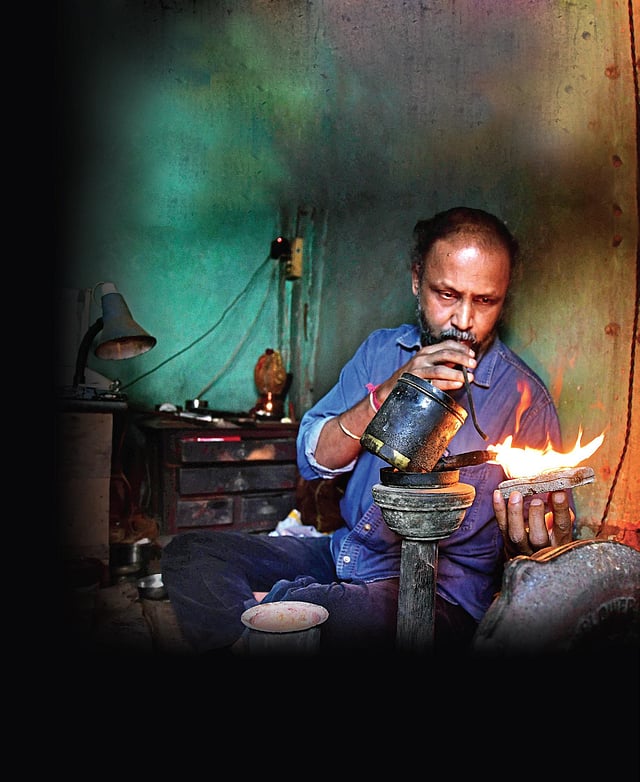

BELAGAVI: Old is Gold,” goes a well-known proverb. Literally, the preservation of a unique craft passed on from one generation to the next, is as precious as the yellow metal. Just as the art of making a traditional gundgadgi out of gold is a rare skill known to a few goldsmiths. They have been accomplishing it the traditional way sans any technology for years now.
Today, gundgadgis are mostly made of silver. While machines have hastened the process of making them both in silver and gold, a generation of goldsmiths, however, do their work with absolute devotion, fashioning exquisite gundgadgis using simple methods. Such is the sacrament of a gundgadgi that it’s a prayer for the goldsmiths creating them.

Gundgadgis have been around for at least 900 years. According to Dr Sarjoo Katkar, an expert in Lingayat studies, when Basaveshwara established the Lingayat tradition in the 12th century, he mandated every Lingayat to wear an Ishtalinga. Since the Linga was to be protected from the elements, the gundgadgi, which resembles a round pot, was introduced to cover the former.
‘Gund’ means round and ‘Gadgi’ means pot. While passing through Jed Galli in Shahapur, Belagavi, one can see Shivanand Jagannath Hubli at work. The 53-year-old goldsmith is one of the few custodians of this craft, using simple tools to make gold gundgadgis. Sitting on his workshop floor, Shivanand hammers at a piece of gold to mould it to a required shape and size.
He says that while there are goldsmiths making gundgadgi out of silver, at least 90 per cent of their work involves machines. “Some goldsmiths also make gundgadgis from gold with the help of machines, but their finished product is not as perfect as handmade,” he adds. The gundgadgis made by Shivanand are noted across the country. Most of his customers are jewellery shop owners, who usually contact him to place orders, and also provide him with the required raw gold pieces. He then works on those pieces and provides the finished product, for which he gets paid.

One of the major aspects of making a gold gundgadgi by hand is the amount of work involved. The laborious process could take days, and there is no margin for error. It’s nothing short of perfection. Shivanand himself takes between three and four days to make one gundgadgi. Also, the special tools needed are rarely available at most markets, resulting in goldsmiths themselves having to produce them.
The Hublis have spent three generations making gold gundgadgis. Karveerappa Veerappa Hubli, Shivanand’s grandfather started making gold gungadgis, which was continued by his son Jagannath, and later on by Shivanand. There are five types of gundgadgis – Shahapurimath, Devangerimath, Ishwarkai, Lingatkai and Chawka – each with its own design. While it is common for most Lingayats to wear silver gundgadgis, a few well-to-do devotees prefer golden gundgadgis.
With every varying design, the requirement of gold also varies. Shivanand says that the gold needed for a Lingatkai is 9 grams, Devangerimath (15 grams), Shahapurimath (17.5 grams), and Ishwarkai (20 grams), while for Chawka it is 100 grams. “A Lingatkai of 9 grams is the lightest gundgadgi made by me, while a Chawka of 170 grams has been the heaviest,” he says. But despite the differing weight, each hand-made golden gundgadgi comes with its own Midas Touch, of those pious hands that have etched its surface with devotion.
900 Years
Gundgadgis have been around for at least the 12th century. Gund’ means round and ‘Gadgi’ means pot
Artefacts made by Shivanand Hubli are noted across the country